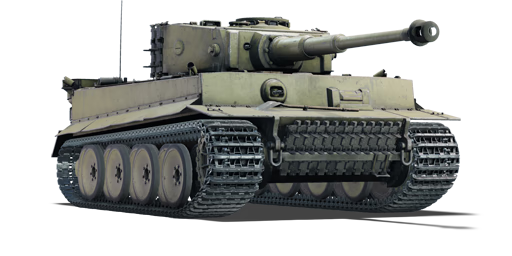


The Heavy Tank No.6 (Japan) refers to a Tiger E (Chassis No. 250455) purchased by Japan under the advice of General Hiroshi Ōshima, the Japanese ambassador in Berlin. General Ōshima had visited the Eastern Front, where he saw the formidable Tiger tank in action. In May 1943, Japan made an offer to acquire either the blueprints or an actual model of the tank. After negotiations, it was decided that Japan would purchase a Tiger I along with its blueprints, ammunition, and spare parts, with the aim of potentially facilitating domestic production. The plan was to ship the tank to Japan by submarine, intending to strengthen Japanese tank forces and serve as valuable research material. However, the transfer was never completed due to the increasing dominance of Allied naval forces. As a result, the Tiger I was loaned "back" to the Germans and subsequently used in the 101st SS Heavy Panzer Battalion in Belgium.
The Heavy Tank No.6 was introduced along with the initial Japanese Ground Forces tree in Update 1.65 "Way of the Samurai". It was initially made available as a pre-order premium pack for the release of the Japanese tree and was discontinued after the 2019 Summer sales. It features a late Tiger E turret on a mid-production Tiger H1 hull, as well as the Tiger H1's ammunition selection. It also lacks the improved turret-top armour of the Tiger E.
The Tiger I offers a unique experience to Japanese tank crews with its reliable 100 mm frontal armour and powerful KwK36 8.8 cm gun. This combination makes it effective both as a sniper and a brawler, particularly when angled to enhance armour protection. However, a drawback of the Japanese-purchased Tiger I is the placement of S-Mine launchers on the hull, especially the two mounted on the front corners, which can restrict the gun's ability to aim downward at optimal angles; a factor that must be carefully managed in combat.
| Ammunition | Type | Armor penetration (mm) at a distance: | |||||
|---|---|---|---|---|---|---|---|
| 10 m | 100 m | 500 m | 1000 m | 1500 m | 2000 m | ||
| APCBC | 165 | 162 | 151 | 139 | 127 | 117 | |
| HE | 18 | 18 | 17 | 15 | 14 | 13 | |
| APCBC | 153 | 151 | 140 | 128 | 116 | 106 | |
| HEAT | 110 | 110 | 110 | 110 | 110 | 110 | |
| Belt | Belt filling | Armor penetration (mm) at a distance: | |||||
|---|---|---|---|---|---|---|---|
| 10 m | 100 m | 500 m | 1000 m | 1500 m | 2000 m | ||
| AP/AP/AP-T | 13 | 12 | 7 | 3 | 2 | 0 | |







 2 x (120 / 185 / 210) %
2 x (120 / 185 / 210) % 
 2 x 172 %
2 x 172 % 

Mobility | |
|---|---|
Protection |
|---|
Firepower | |
|---|---|
